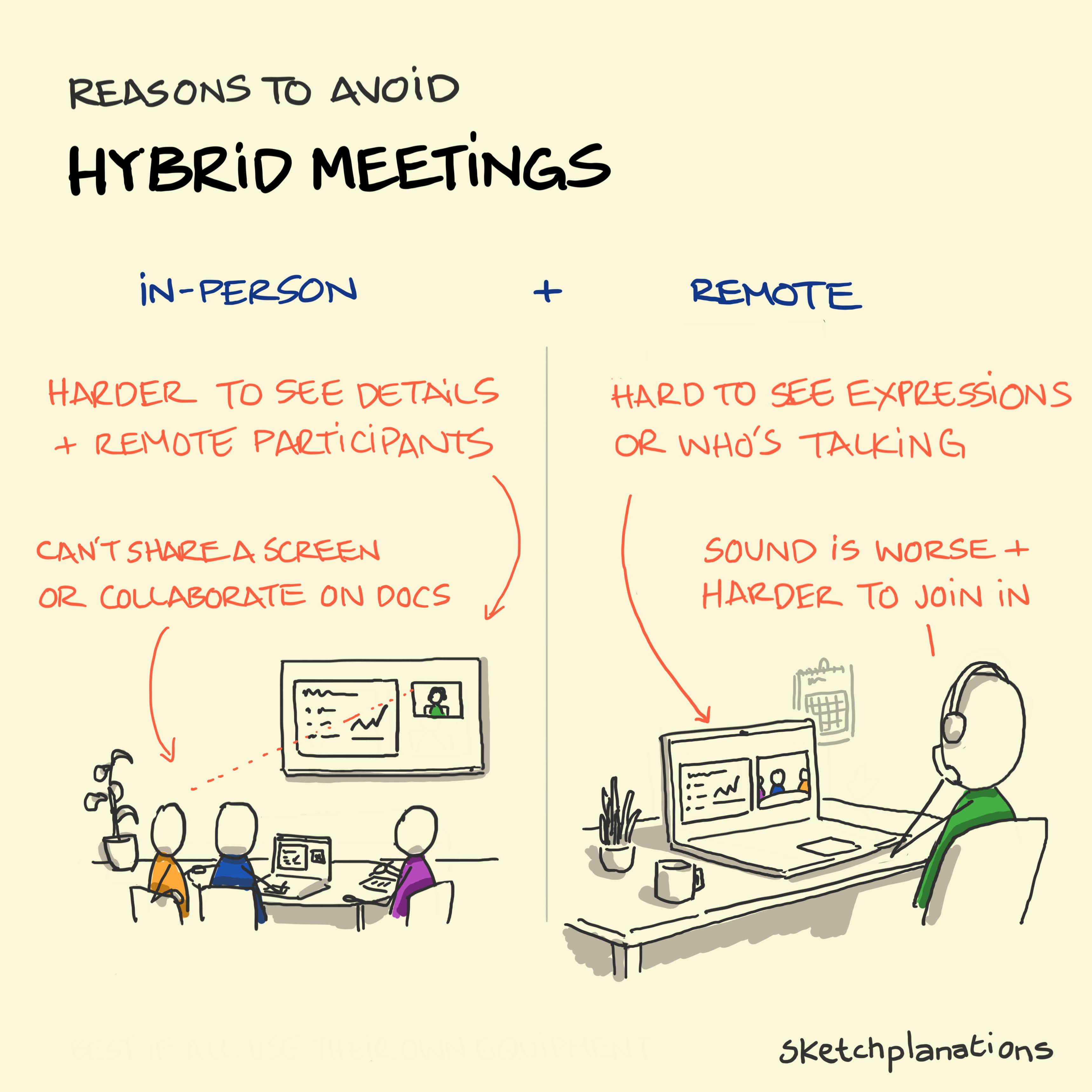Hybrid meetings

- Prints
- Copied!
👇 Get new sketches each week
A hybrid meeting is when some participants are in-person, using shared equipment, and some are remote using their own. Generally speaking, hybrid meetings have a number of disadvantages you may have experienced and are best avoided if possible. Perhaps you've been on a call where everyone's laughing about something except the people joining remotely who have no idea what's going on. It can be pretty rubbish.
For the in-person participants, it's easy to chat with the people in the room, but with just one person controlling the screen it can be hard to see details of any docs that are shared, and it's difficult to see the remote participants as clearly as those in the room. Those not driving also can't scan through docs at their own pace, or share a screen, or collaborate on a document. It's like having just one person with access to the whiteboard.
The remote participants have it worse. Because the camera is likely not as good for the in-person participants the people are smaller and it's hard to see expressions or track who's talking. Some may be off-picture. Without seeing expressions, and with a delay even a tiny bit longer than being in-person it's much harder to find when to join in a conversation. The sound quality ƒrom the room will often also make it harder to hear some of the participants and because the shared mic won't be on mute there'll be background noise.
Taken together these disadvantages make hybrid meetings best avoided where possible.
Where possible, for the in-person meeting have everyone use their own equipment, joining the call on their own laptop so their video is clear and if not using headsets buy a high-quality speaker.
Thanks to GitLab whose list — hybrid calls are annoying — made the disadvantages much clearer to me and led to better meetings at work.

